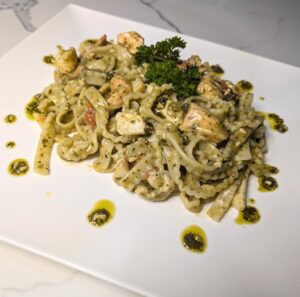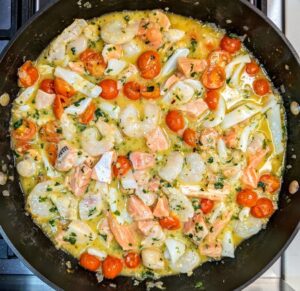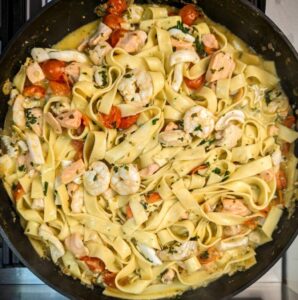
Normally, you’d pair a lighter style white wine with seafood, but because the flavours in this dish are creamy and rich you can pair a bolder white instead. Either way, I recommend a wine that’s soft on the palate so the flavours don’t compete.
If you prefer a lighter style – go for a Pinot Gris. Otherwise, try something a little heavier like a Semillon or Roussane. Chardonnay will also work if that’s all you have at hand.











